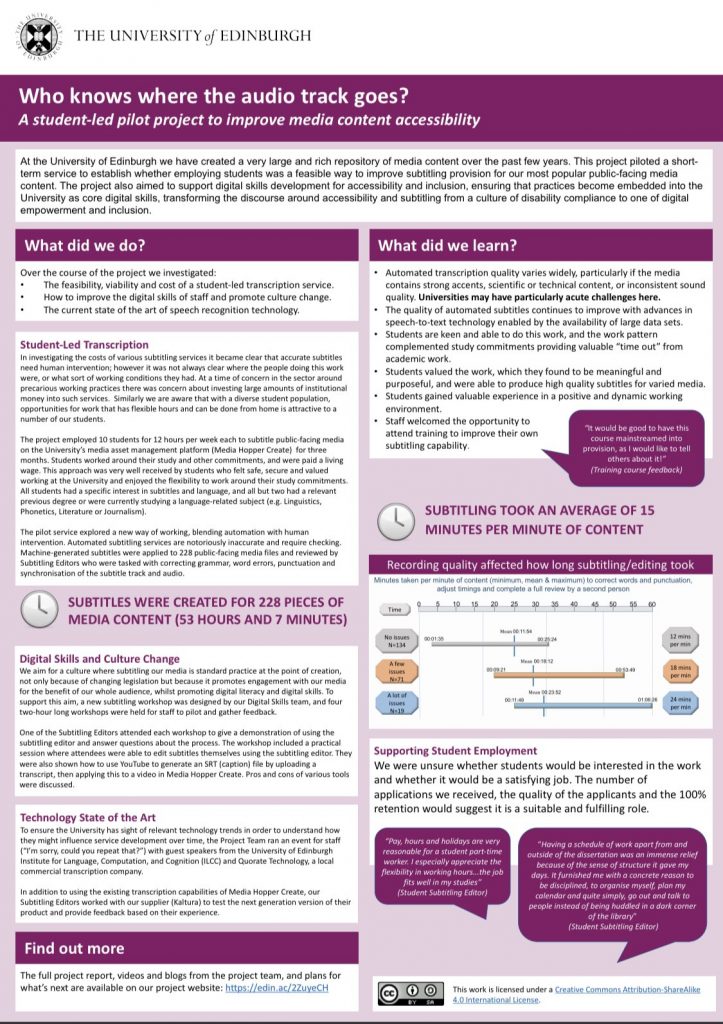So, I wrote a blog post last year about building out a new WordPress blogging service at Edinburgh over the summer of 2018. That was a cool piece of work and we still get a thrill out of running it on a daily basis. This year we did something else cool over the summer. In order to inform how we might ramp up our use of subtitling on our collections of media, we ran a pilot subtitling project.
We took a Gasta talk and a poster about it to ALT-C and I mentioned it a little in another post, but I’ve been meaning to say more, and to draw together a few of the key resources we’ve created to explain and share our work.
The project had three strands to it:
- Improve digital skills and promote culture change.
- Test the feasibility, viability and cost of a student-led transcription service.
- Research into the state of the art of media transcription.
We set out to run some pilot training courses in DIY subtitling using Kaltura, with a view to testing the waters as to take up, interest, and the extent to which we could roll this into our normal programme of digital skills development.
We also wanted to try running a human-mediated subtitling service working with our own students, instead of outsourcing this labour to gig-economy workers as is pretty much the case with most transcription platforms. We weren’t sure whether our students might want this work, or whether it would prove to be a feasible and viable model.
Finally we wanted to understand better the state of the art in this space. Speech to text technology is improving all the time, but we know that there are particular challenges in education, not least funny accents, specialist terminology and variable sound quality.
We learned a whole lot in a really short space of time. The learnings on this project were really rich and we covered a whole lot of ground. We also had support from an external colleague who told us that what we did in this short project was sector-leading. This is always nice to hear, and is a testament to the top-class thinking that the project team and our governance board brought to the project.
By doing this work we know enough now that we can move on and create a service for the institution that will continue to improve the accessibility of our content, support our students in many different ways, and support a wider culture change around embedding accessibility into normal practice.
We’ve pulled together all our outputs and findings into a website, including our final report. There was so much in this project that we think is worth sharing, not least to remind ourselves whilst we work on the next stage of this.
In particular I’d recommend the blog posts and video about the project and their experience that our students created:
- Meet the media subtitling team
- Hot chocoloate, hugs and great expectations
- Subtitles for the many, not the few
Finally, here’s the poster we made for the ALT Conference, and me trying and failing to condense all of this down into a 5 minute Gasta talk!

